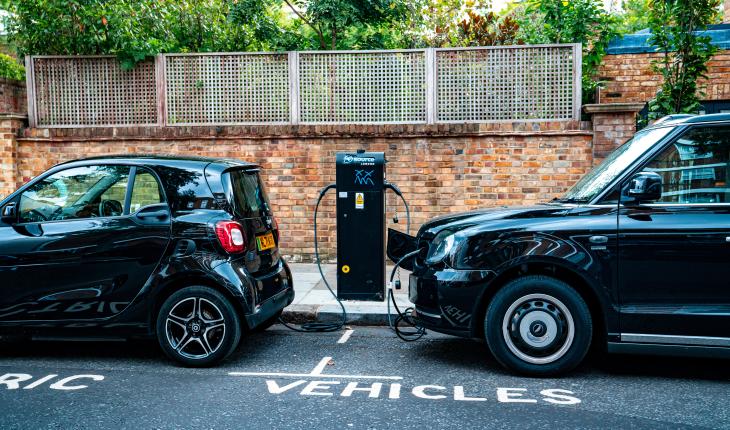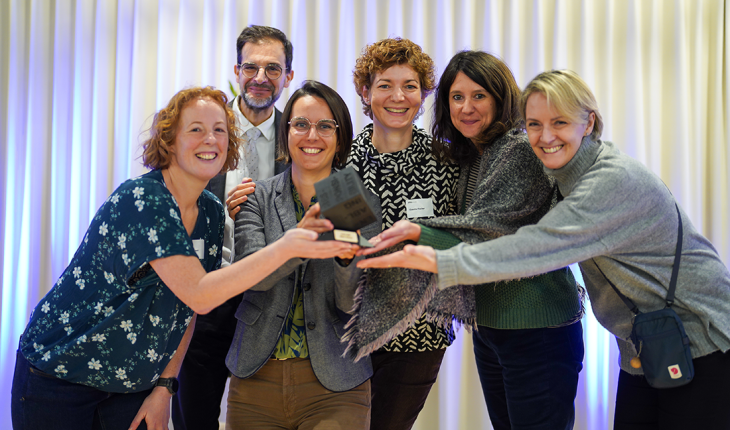Smart grid solution powers Swiss energy future

Research scientist Lukas Ortmann has been working with AEW Energie AG, the energy provider for the Canton Aargau, to leverage real-time measurements and cutting-edge algorithms for remote control of solar inverters in the grid. In the long run, this virtual grid reinforcement can enable AEW to stabilize the voltage, deploy more renewable generators and increase network capacity without having to lay more power cables. This innovative solution yields significantly lower costs and avoids any environmental disruption.
In detail: the algorithm, called Online Feedback Optimization, solves an optimization problem (e.g., minimize power losses or economic cost). Its novelty is that it does not use a detailed system model to calculate optimal actions offline, but instead repeatedly takes small steps towards the most efficient operating point by only using measurements from the grid. In the AEW grid, the algorithm gathers voltage and reactive power flow measurements from throughout the grid, computes updated setpoints for the photovoltaic inverters to decrease reactive power flow costs, and sends these commands out to the photovoltaic inverters. This algorithmic decision making based on continually gathered feedback data is known as "closed loop" control and ensures optimized operation, more responsiveness, and greater resilience.
The successful pilot implementation delivered excellent results in controlling the reactive power generation of a single solar plant and points to a potentially large impact if this software solution were deployed more widely in the energy infrastructure: it is a highly effective tool to enable the increasing use of solar energy, which is an important part of the Swiss Energy Strategy 2050.
Ortmann said: “While solving the problem of a secure, efficient energy supply is an ideal use case, the technology has far wider potential. I see possibilities for achieving similar gains in many applications where an engineering system needs to be controlled and used in an efficient way. Examples can be found in the distribution grid, transmission grid, and beyond.”
The mathematical foundation behind this innovative smart grid solution was developed under the leadership of Dr. Saverio Bolognani in the group of Prof. Florian Dörfler at the Institute of Automatic Control (IfA) of ETH Zurich and the NCCR Automation with support from the Swiss Federal Office of Energy.
Dr. Moser of the Swiss Federal Office of Energy says, "This project is the culmination of eight years of research in Online Feedback Optimization. What started as very theoretical research has evolved into an exciting, practical solution to an urgent real-world problem with great societal benefits." Ortmann adds, "AEW's willingness to explore innovative ideas in the service of a robust energy supply has made them an ideal partner for us to refine this technology that will ultimately help all of Switzerland."
Alessandro Scozzofava, team leader for grid development at AEW, said: “This project is a striking example of the optimal interplay between innovation, security of supply and sustainability - three of our most important values. Providing optimized grids and grid services to meet national demand is a complex challenge, and we have all noted how energy supply responds to external influences. Solar energy has enormous potential to reduce CO2 emissions from power generation, but the corresponding grid expansion usually comes at a high cost. With the simple, smart automation developed by Lukas Ortmann's team, we can contribute to a grid of the future with decentralized renewable energy generation plants. At the same time, this reactive power control provides voltage regulation, which enables us to cope with the increasing demand for renewable energies and to phase cost-intensive grid expansions accordingly. Furthermore, it opens up new possibilities for financial compensation for PVA owners who make their plants available for such grid services and can thus even create a further incentive for the construction of new PVAs.”
"Lukas Ortmann’s team is testing its research results in the real environment, thus performing the transfer to practice. The successful demonstration in a power grid shows that the method is relevant for application in grid operations. Moreover, other challenges in the power grid and important extensions of the use case shown here can be addressed with this method. I see great potential in the use of such data-driven methods based on measurements and extensible optimization algorithms," says Mathias Duckheim, Senior Key Expert at Siemens.
For further information on Online Feedback Optimization, Lukas Ortmann presents a deep dive:
For further information please contact Linda Seward or take a look at the project website.
Text: Robynn Weldon




